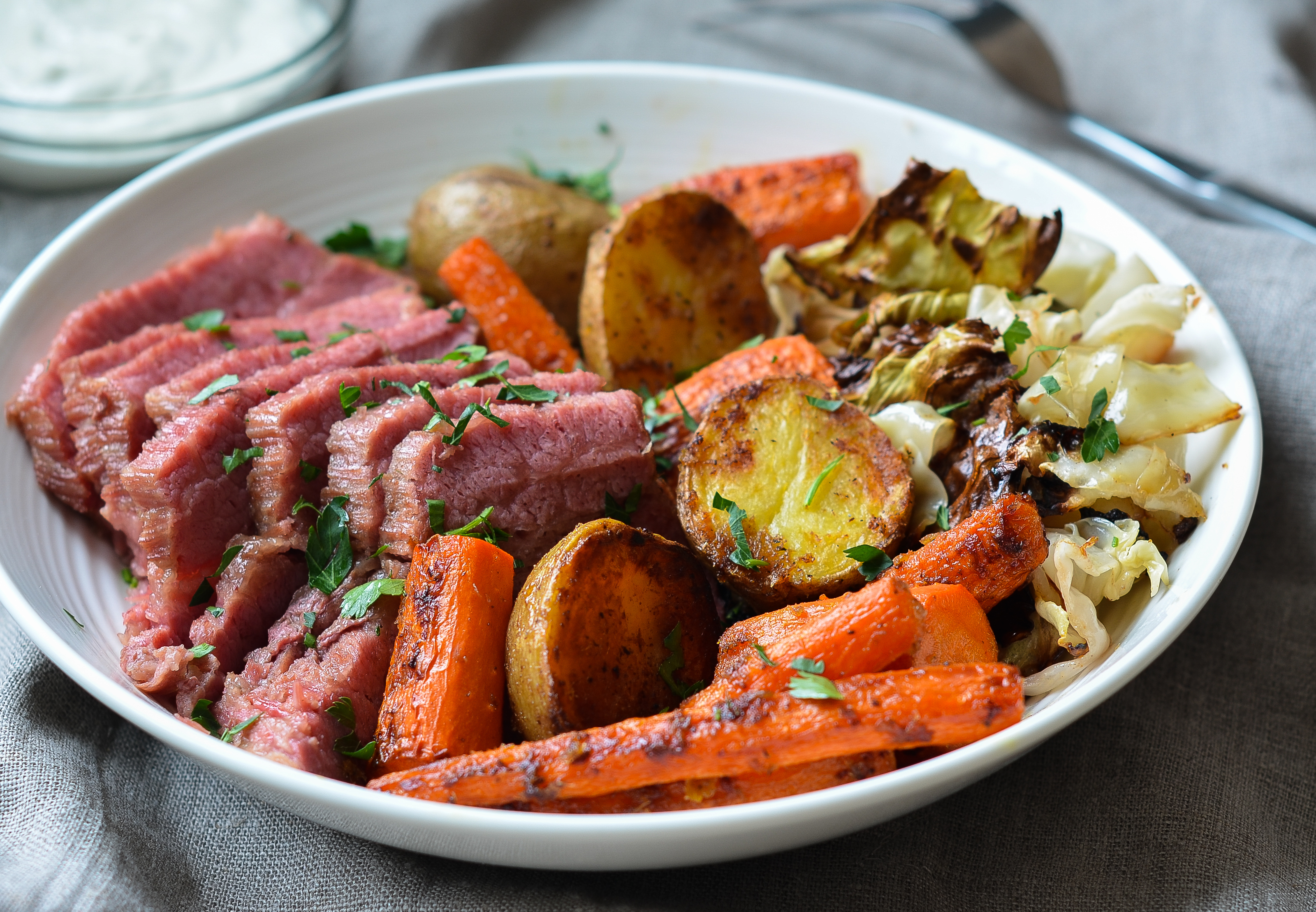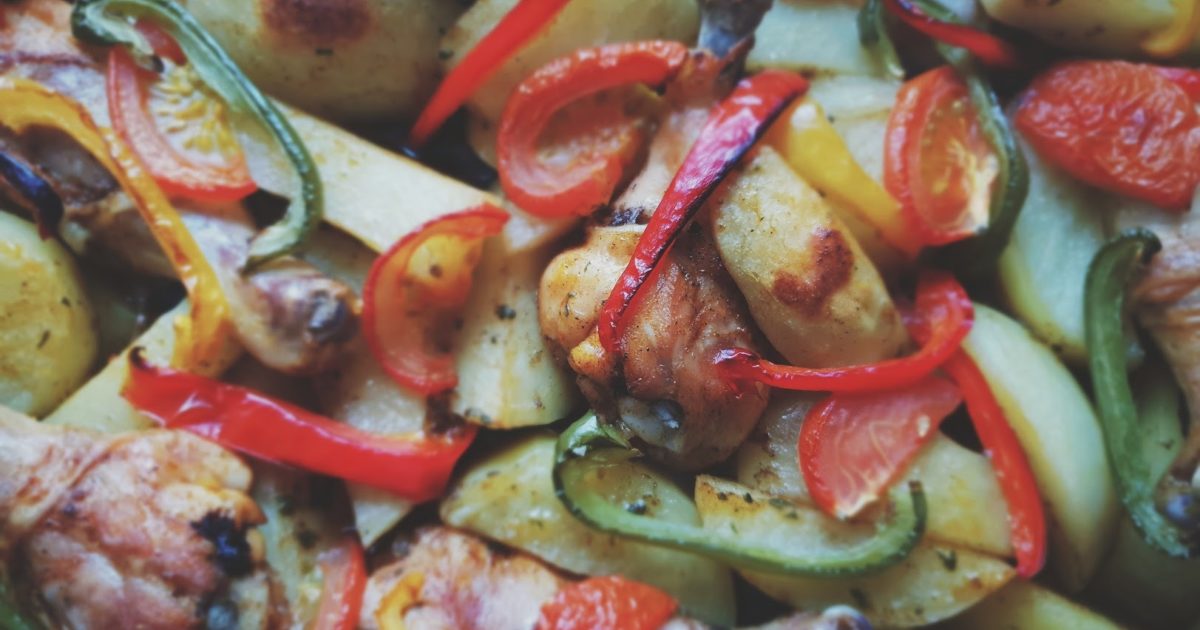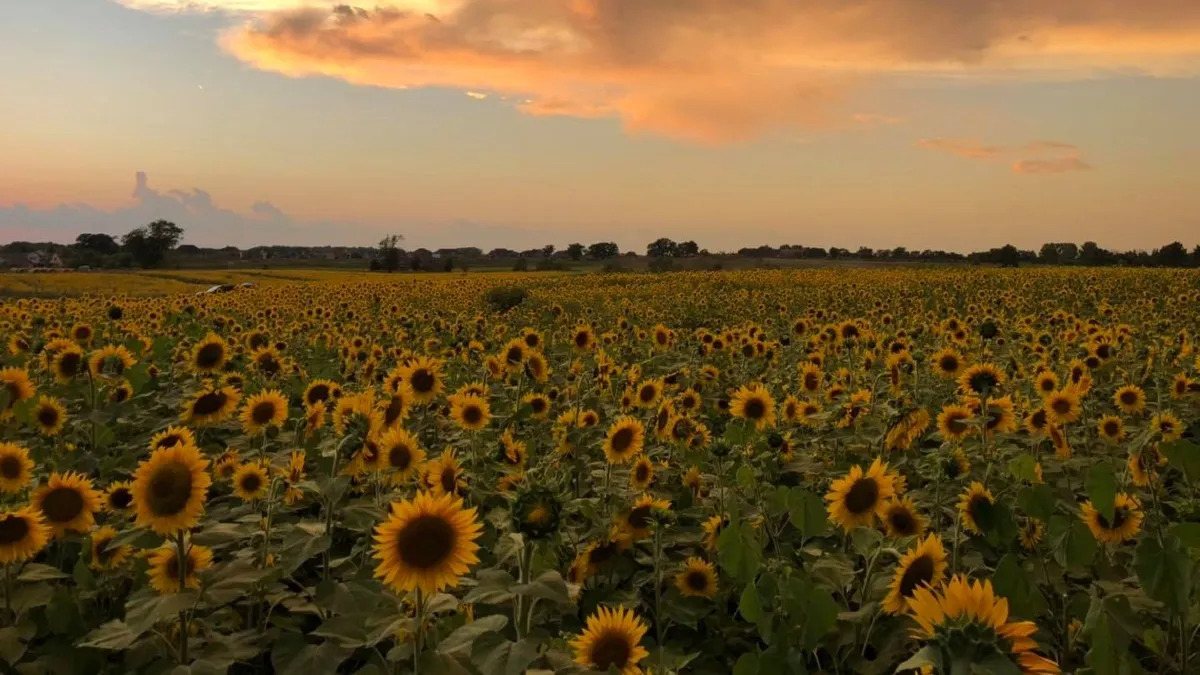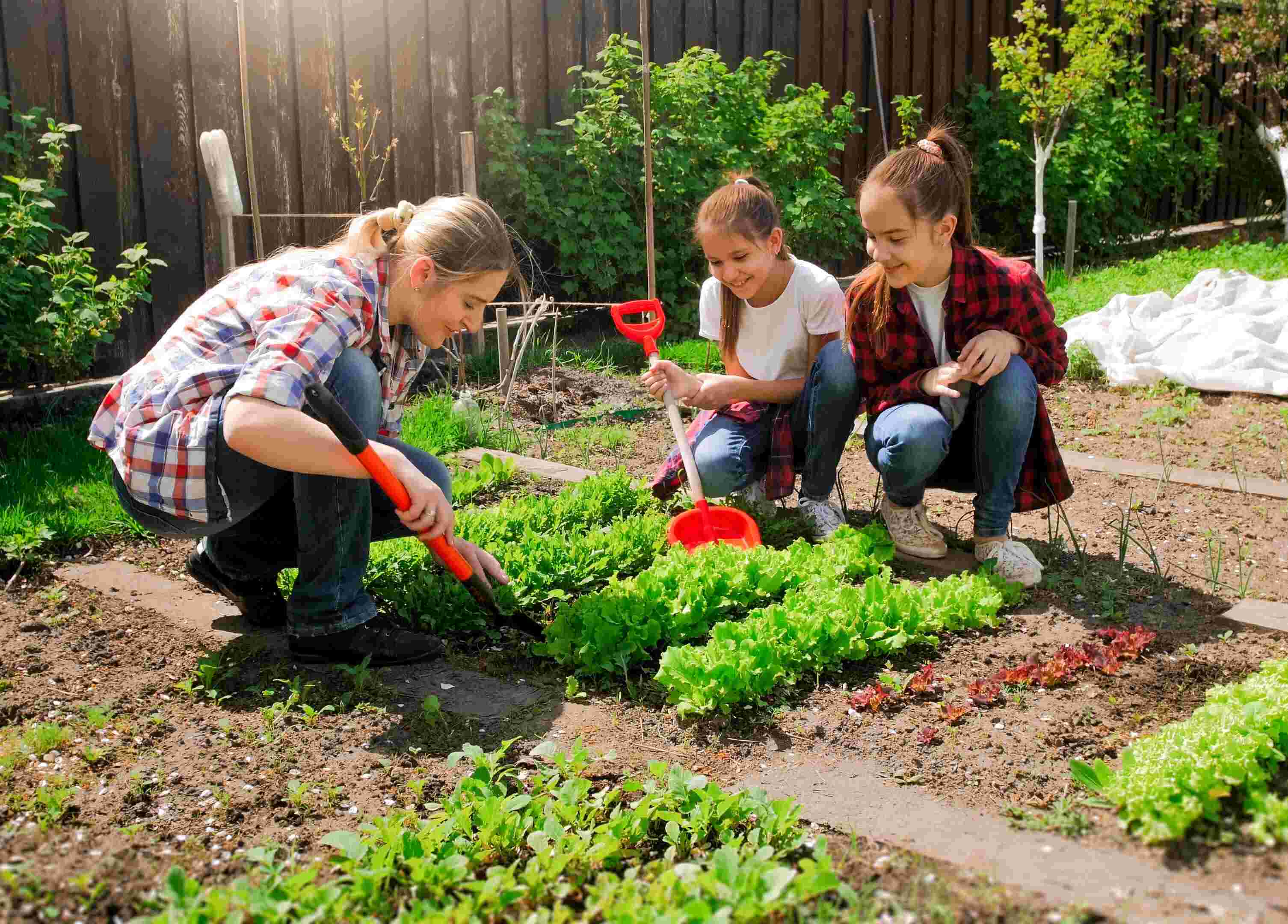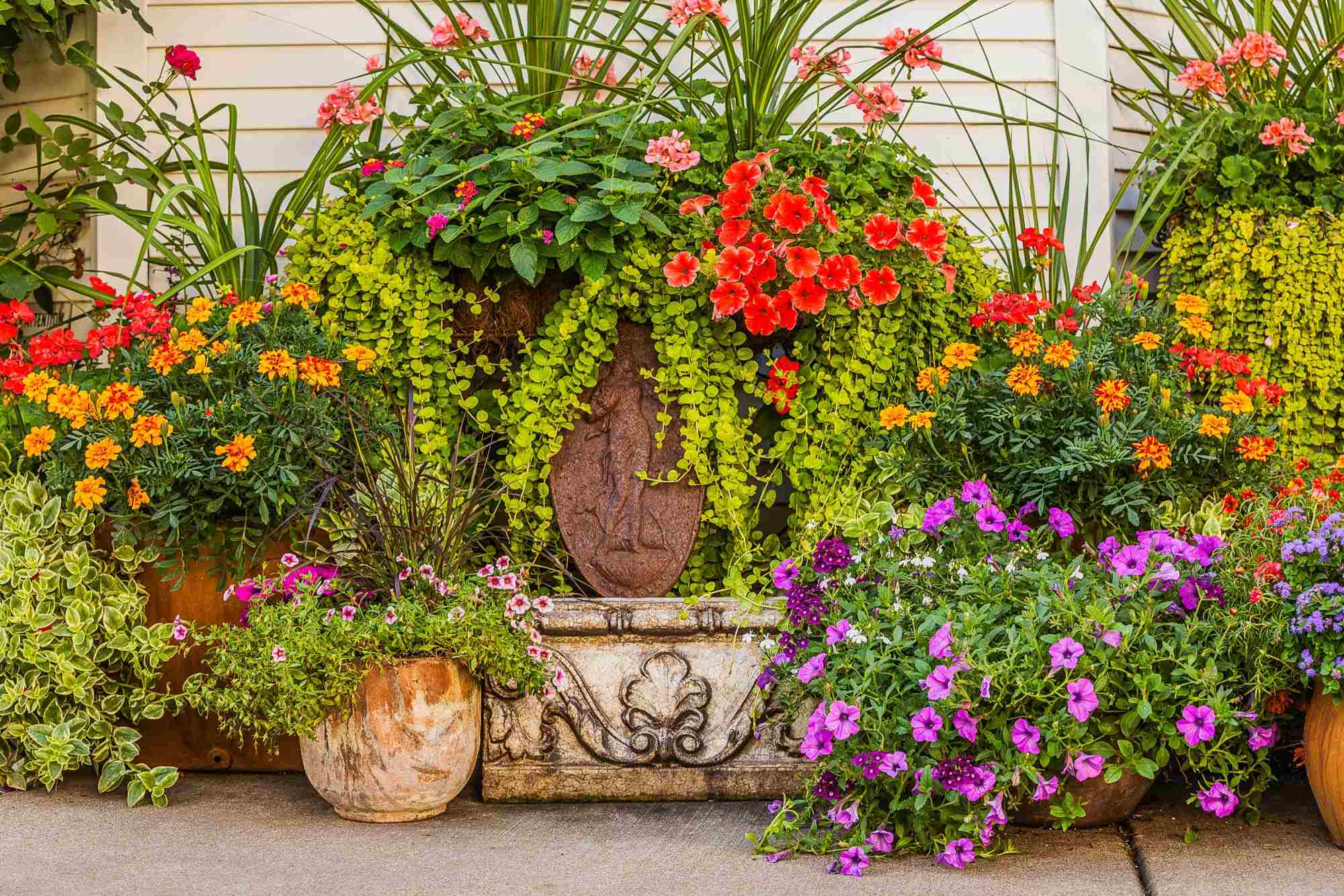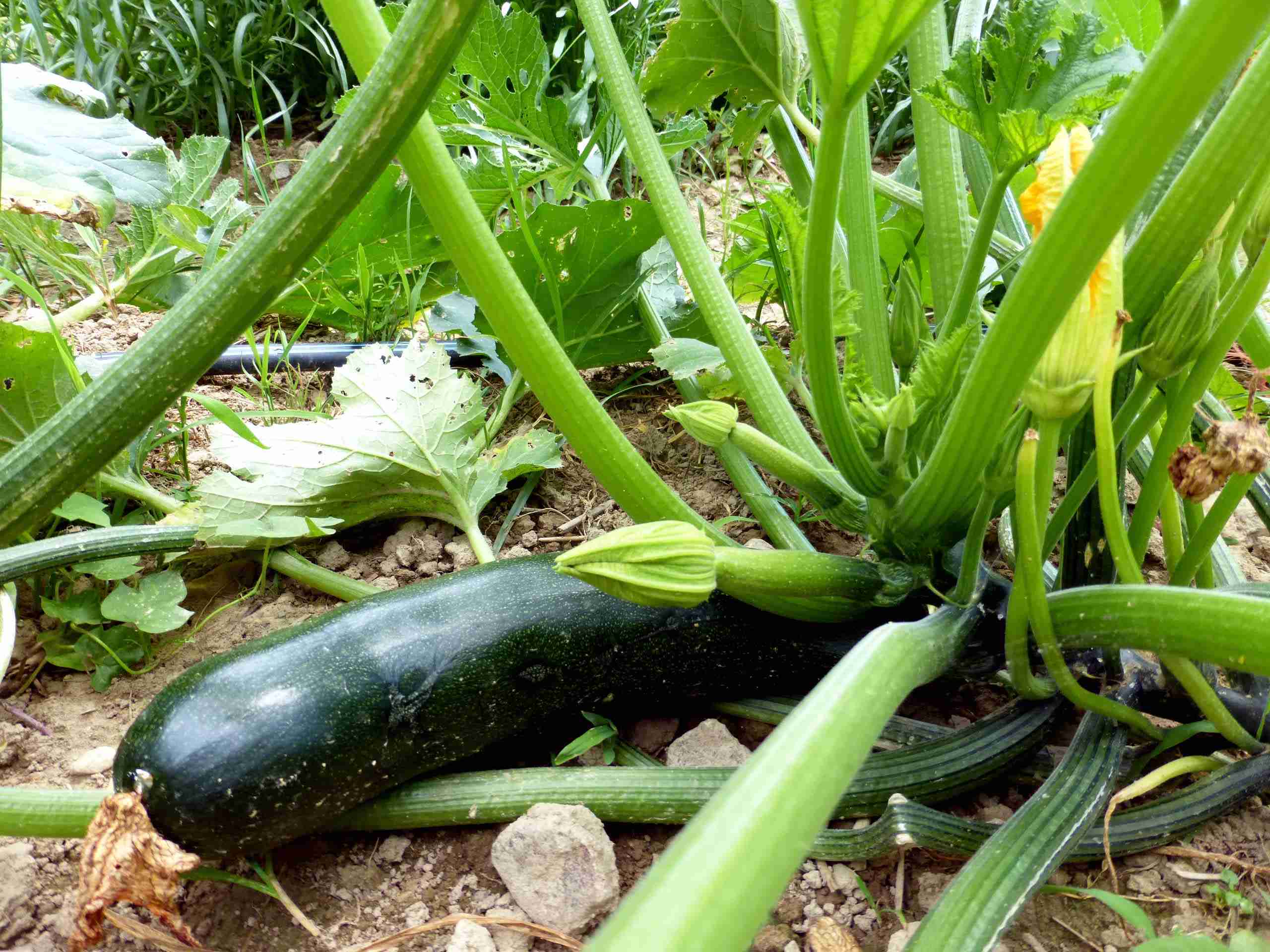Home>Types of Gardening>Edible Gardening>When To Plant Vegetables Chart


Edible Gardening
When To Plant Vegetables Chart
Modified: January 22, 2024
Discover the perfect time for planting your favorite vegetables with our comprehensive chart. Start your edible gardening journey today!
(Many of the links in this article redirect to a specific reviewed product. Your purchase of these products through affiliate links helps to generate commission for Chicagolandgardening.com, at no extra cost. Learn more)
Table of Contents
- Introduction
- Understanding the Planting Seasons
- Factors to Consider Before Planting Vegetables
- When to Plant Specific Vegetables
- Vegetables to Plant in Early Spring
- Vegetables to Plant in Late Spring
- Vegetables to Plant in Early Summer
- Vegetables to Plant in Late Summer
- Vegetables to Plant in Early Fall
- Vegetables to Plant in Late Fall
- Conclusion
Introduction
Welcome to the world of edible gardening! Whether you have a sprawling backyard or a small space on your balcony, growing your own vegetables can be an incredibly rewarding experience. Not only does it provide you with a fresh and sustainable source of food, but it also allows you to connect with nature and enjoy the satisfaction of seeing your plants flourish.
But before we dive into the wonderful world of planting vegetables, it’s important to understand the concept of planting seasons. Different vegetables have different requirements when it comes to temperature, sunlight, and soil conditions. By understanding the optimal planting times for each type of vegetable, you can ensure the best chances of success and a bountiful harvest.
In this article, we will explore the factors to consider before planting vegetables, as well as a detailed guide on when to plant specific vegetables throughout the seasons. So, whether you’re a seasoned gardener looking to expand your edible garden or a beginner eager to grow your own food, this article will provide you with all the information you need to get started.
Understanding the Planting Seasons
When it comes to edible gardening, timing is crucial. Understanding the planting seasons will help you make informed decisions about when to sow your vegetable seeds or transplant seedlings into your garden. The planting seasons are typically categorized into four main periods: early spring, late spring, early summer, and late summer. Additionally, there are also opportunities for planting in early and late fall, depending on your climate.
Each season has its own unique characteristics and temperature ranges that determine which vegetables thrive best during that time. Early spring is known for cool-season crops such as lettuce, spinach, and peas, as they can tolerate cooler temperatures. Late spring is when the weather starts to warm up, allowing for the planting of warm-season crops like tomatoes, peppers, and cucumbers.
Early summer is the peak growing season, with high temperatures and longer days, making it ideal for heat-loving plants such as corn, beans, and squash. Late summer offers a second opportunity to sow quick-maturing vegetables like radishes and greens, which can take advantage of the remaining warm weather before fall arrives.
Finally, early and late fall provide a chance to extend the growing season. In milder climates, you can continue growing cool-season crops like kale, carrots, and radishes. These plants can withstand cooler temperatures and even a light frost, allowing you to enjoy fresh produce well into the colder months.
Understanding the planting seasons in your specific region is crucial. Consider factors like average frost dates, temperature range, and daylight hours to determine which vegetables will flourish during each season. Local gardening centers, online resources, and even experienced gardeners in your area can provide valuable insights and guidance to help you plan your planting schedule.
By aligning your vegetable choices with the appropriate planting seasons, you are giving your plants the best chance to thrive and produce a bountiful harvest. So, let’s delve further into the factors that you should consider before planting your vegetables.
Factors to Consider Before Planting Vegetables
Before you start planting your vegetables, there are several important factors to consider. These factors will help ensure the success and health of your plants, allowing you to maximize your harvest. Let’s take a closer look at what you should keep in mind:
1. Climate and Hardiness Zone: Different vegetables have different temperature requirements. It’s crucial to know your specific hardiness zone and understand the climate in your area. This will help you choose vegetables that are well-suited for your region and have a higher chance of thriving.
2. Sunlight: Most vegetables require at least six hours of direct sunlight per day to grow and develop properly. Assess the sunlight patterns in your garden or growing space to determine which areas receive the most sunlight. Choose vegetables accordingly, making sure they will have access to adequate light.
3. Soil Quality: Healthy soil is the foundation of a successful vegetable garden. Consider conducting a soil test to determine its pH level and nutrient content. Most vegetables prefer a pH range of 6 to 7. Additionally, amending your soil with organic matter such as compost can improve its texture and fertility.
4. Watering: Adequate watering is essential for the growth of vegetables. Consider the availability of a water source and whether you’ll be able to provide consistent watering. Some vegetables require more water than others, so make sure to choose plants that align with your watering capabilities.
5. Companion Planting: Companion planting is the practice of strategically planting certain vegetables together to benefit each other. For example, planting marigolds alongside tomatoes can help deter pests. Research companion plants for the vegetables you plan to grow and design your garden layout accordingly.
6. Pest Control: Take into account potential pests that can target your vegetables. Incorporate preventative measures such as using row covers or planting pest-repellent plants. Additionally, practicing crop rotation and maintaining overall garden cleanliness can help minimize pest issues.
7. Timing: As mentioned earlier, timing is critical in vegetable gardening. Consider the specific planting windows for each vegetable, as well as the duration of their growth cycle. This will help you plan your garden layout and optimize your planting schedule for continuous harvest throughout the season.
By considering these factors, you can create an ideal environment for your vegetable garden, promoting healthy growth and maximizing your yield. So, let’s dive into the specific timing for planting different vegetables in each season.
When to Plant Specific Vegetables
Knowing when to plant specific vegetables is essential for successful gardening. Here is a guide to help you determine the best times to plant some commonly grown vegetables:
1. Tomatoes: Tomatoes are warm-season crops that thrive in late spring to early summer. Start seeds indoors 6-8 weeks before the last frost date, and transplant them into the garden after all danger of frost has passed.
2. Peppers: Similar to tomatoes, peppers are warm-season crops. Start seeds indoors 8-10 weeks before the last frost date, and transplant them outside when the soil has warmed up and all frost threats have passed.
3. Lettuce: Lettuce is a cool-season crop that can tolerate light frost. Start sowing seeds directly in the garden 2-4 weeks before the last frost date in early spring. For a continuous harvest, sow additional seeds every 2-3 weeks throughout the season.
4. Carrots: Carrots are also cool-season crops that prefer cooler temperatures. Sow carrot seeds directly in the garden 2-3 weeks before the last frost date in early spring. They can also be planted again in late summer for a fall harvest.
5. Cucumbers: Cucumbers are warm-season vegetables that require warm soil and ample sunlight. Start seeds indoors 2-4 weeks before the last frost date or directly sow seeds in the garden when the soil temperature reaches 60°F (15°C).
6. Beans: Beans are warm-season crops that don’t tolerate frost. Sow bean seeds directly in the garden after all danger of frost has passed and the soil has warmed up, usually in late spring or early summer.
7. Spinach: Spinach is a cool-season vegetable that can tolerate light frosts. Sow spinach seeds directly in the garden 4-6 weeks before the last frost date in early spring. It can also be planted again in late summer or early fall.
8. Zucchini: Zucchini is a warm-season vegetable that requires warm soil and plenty of sunlight. Sow zucchini seeds directly in the garden after the last frost date when the soil temperature reaches approximately 70°F (21°C).
9. Radishes: Radishes are quick-growing cool-season crops. Sow radish seeds directly in the garden as soon as the soil can be worked in early spring. For a continuous harvest, sow seeds every 2 weeks throughout the season.
This is just a snapshot of some common vegetables, but there are many more to explore. Research the specific planting requirements of the vegetables you plan to grow to ensure optimal timing for your region and climate.
Remember, these are general guidelines, and factors such as your location, microclimate, and personal gardening experience may require adjustments to the planting schedule. Observing the weather conditions and paying attention to the health of your plants will also help you fine-tune your planting timeline.
Now that you have a better understanding of when to plant specific vegetables, let’s explore the vegetables to plant in each season for a continuous harvest.
Vegetables to Plant in Early Spring
Early spring is an exciting time for gardeners as it marks the beginning of the planting season. While the weather may still be cool, there are several vegetables that thrive in these conditions. Here are some vegetables that you can plant in early spring:
1. Lettuce: Lettuce is a versatile and easy-to-grow vegetable that can tolerate cooler temperatures. Varieties such as leaf lettuce and butterhead lettuce are perfect for spring planting. Sow seeds directly in the garden or in containers for a fresh supply of salad greens throughout the season.
2. Spinach: Spinach is another cool-season favorite that can be planted early in the spring. This nutrient-rich green leafy vegetable prefers temperatures below 75°F (24°C) for optimal growth. Sow seeds directly in well-drained soil and enjoy fresh, vitamin-packed spinach in your salads and smoothies.
3. Peas: Peas are a delightful addition to any early spring garden. Snap peas and snow peas are quick to mature and can tolerate cooler temperatures. Sow the seeds directly in the ground, providing them with support such as trellises or stakes as they grow. Enjoy the sweet taste of fresh peas straight from the pod.
4. Radishes: Radishes are fast-growing vegetables that thrive in cool weather. They can be directly sown in the garden and are ready to harvest within a few weeks. Radishes come in a variety of colors and flavors, adding a refreshing crunch to salads and sandwiches.
5. Carrots: Carrots are cool-season vegetables that can be planted as soon as the soil is workable in early spring. Choose varieties that are suited for early planting, and sow the seeds directly in well-prepared soil. Be patient, as carrots take some time to grow, but the anticipation is worth it when you harvest sweet and crispy carrots.
6. Spring Onions: Spring onions, also known as scallions or green onions, are ideal for early spring planting. They can be started from seeds or transplants and are ready to harvest when the leaves are about 6-8 inches long. Use spring onions to add a mild, onion-like flavor to your soups, stir-fries, and salads.
These are just a few examples of vegetables that thrive in the early spring season. Remember to consider your specific hardiness zone and local weather conditions when planning your garden. Other cool-season vegetables like kale, arugula, and broccoli can also be planted in early spring for a diverse and abundant harvest.
Continue to provide adequate water and monitor for any signs of pests or diseases. With proper care and attention, your early spring garden will yield a delicious bounty of fresh and nutritious vegetables.
Vegetables to Plant in Late Spring
As late spring arrives, the weather starts to warm up, and there is an abundance of vegetables that thrive in these conditions. This is an optimal time for planting warm-season crops that require more sunlight and higher temperatures. Here are some vegetables to plant in late spring:
1. Tomatoes: Tomatoes are a staple in many home gardens and are best planted in late spring when the soil has warmed up. Transplant seedlings into the garden after all danger of frost has passed and the soil temperature is consistently above 60°F (15°C). Choose from a variety of tomato types, such as cherry tomatoes, beefsteak tomatoes, or heirloom varieties, to enjoy the fresh and juicy fruits later in the season.
2. Peppers: Peppers, including sweet peppers and hot peppers, thrive in warm weather and require ample sunlight. Plant pepper seedlings in late spring after any chance of frost has passed. Make sure the soil temperature is above 65°F (18°C) for optimal growth. Enjoy the vibrant colors and diverse flavors of these culinary favorites.
3. Cucumbers: Cucumbers are vigorous climbers and enjoy the warm conditions of late spring. Plant cucumber seeds or seedlings in well-drained soil and provide trellises or supports for them to climb. Regularly harvest the crisp and refreshing cucumbers as they reach maturity. They are perfect for salads and pickling.
4. Beans: Beans are easy to grow and come in both bush and pole varieties. Plant bean seeds directly in the garden after all danger of frost has passed and the soil has warmed up. Provide support for pole beans, such as trellises or stakes. Enjoy the harvest of tender and flavorful green beans or snap beans throughout the summer.
5. Zucchini: Zucchini is a prolific summer squash that thrives in warm temperatures and ample sunlight. Plant zucchini seeds or seedlings in late spring when all frost risks have passed and the soil temperature is around 70°F (21°C). Be prepared for a bountiful harvest of elongated, green zucchinis that can be used in a variety of dishes.
6. Corn: Corn is a classic warm-season crop that requires a larger planting space due to its tall growth. In late spring, plant corn seeds in blocks to ensure effective pollination. Make sure to provide regular watering and adequate sunlight. Enjoy the sweet taste of fresh corn on the cob during the peak of summer.
Late spring is the opportune time to plant these warm-season vegetables. Make sure to provide proper care and monitor for pests or diseases. Regularly water your plants, especially during dry periods, and consider mulching to help conserve moisture in the soil. With a little attention and care, you’ll soon be harvesting a beautiful and delicious abundance from your late spring garden.
Vegetables to Plant in Early Summer
As early summer arrives, the weather warms up even further, providing optimal conditions for many vegetables to thrive. This is a great time to plant warm-season crops that require both warmth and longer days. Here are some vegetables that you can plant in early summer:
1. Basil: Basil is an herb that loves warm weather and is a popular addition to gardens and kitchen windowsills. Start basil from seeds or purchase young plants and transplant them into well-drained soil. Basil enjoys full sun and regular watering. Harvest the aromatic leaves to add freshness to your summer recipes.
2. Cucumbers: Cucumbers are warm-season vegetables that thrive in the heat of early summer. Start cucumber seeds directly in the garden or transplant young seedlings. Provide them with support, such as trellises or cages, to improve airflow and to prevent them from sprawling on the ground. Enjoy the crisp and refreshing cucumbers as they grow.
3. Beans: Beans, including pole beans and bush beans, are heat-loving vegetables that thrive in early summer. Directly sow bean seeds in well-drained soil or transplant seedlings. Provide support for pole beans to climb. Regularly harvest the tender young beans for the best flavor and texture.
4. Swiss Chard: Swiss chard is a leafy green vegetable that can tolerate heat and even some shade. Sow Swiss chard seeds directly in the garden or transplant young plants. The colorful stems and vibrant green leaves make it both an attractive and nutritious addition to your summer salads or sautés.
5. Okra: Okra thrives in the heat and humidity of early summer. Sow okra seeds directly in the garden after the soil has warmed up. Give okra plants plenty of space to grow, as they can reach several feet in height. Harvest the tender pods when they are about three to four inches long for the best flavor and texture.
6. Summer Squash: Summer squash varieties such as yellow squash and zucchini are well-suited for early summer planting. Start squash seeds directly in the garden or transplant young seedlings. These prolific plants will provide you with an abundance of delicious and versatile squash that can be grilled, sautéed, or used in baked goods.
It’s important to keep up with regular watering and monitor for pests and diseases during early summer. Mulching around your plants can help conserve moisture and suppress weeds. Enjoy the process of watching your vegetables grow in the warmth of early summer and look forward to a beautiful and bountiful harvest.
Vegetables to Plant in Late Summer
Late summer brings with it the last stretch of warm weather before the arrival of fall. Despite the approaching change in seasons, there are still several vegetables that thrive in the heat and longer days. Here are some vegetables that you can plant in late summer:
1. Radishes: Radishes are quick-growing and well-suited for late summer planting. Sow radish seeds directly in the garden for a fast and rewarding harvest. Opt for varieties that have shorter maturation times, such as French Breakfast or Cherry Belle. Enjoy the crisp and peppery flavor of these root vegetables in salads or as a crunchy snack.
2. Greens: Many leafy greens can be planted in late summer for a fall harvest. Varieties like kale, spinach, and lettuce can withstand the heat while benefiting from the cooler temperatures that will arrive in the following months. Sow seeds directly in the garden or start transplants indoors for later transplanting.
3. Beans: Certain bean varieties can be planted in late summer to extend your harvest. Look for quick-maturing varieties such as bush beans or pole beans with shorter maturation times. Ensure they have enough time to grow and mature before the arrival of colder temperatures.
4. Cabbage: Cabbage is a cool-season vegetable that can tolerate heat during its early growth stages. Start cabbage seeds indoors in late summer and transplant them into the garden once they have established a strong root system. Cabbage can withstand light frosts, making it an excellent choice for a fall harvest.
5. Broccoli: Broccoli is another nutritious vegetable that thrives in cooler temperatures. Start broccoli seeds indoors or purchase transplants to set out in late summer. Ensure they have enough time to grow and develop before the arrival of freezing temperatures. Harvest the heads when they are firm and tightly formed.
6. Carrots: Carrots can be planted again in late summer for a fall harvest. Sow carrot seeds directly in well-prepared soil, ensuring good drainage. Carrots prefer cooler temperatures, making late summer a perfect time for planting. Monitor their growth and harvest them as needed throughout the fall season.
Remember to provide adequate water during the heat of late summer and monitor for pests and diseases that tend to thrive in warm weather. Consider using row covers or other protective measures to shield your plants from excessive heat and to maintain moisture levels.
Late summer planting is an opportunity to extend your growing season and enjoy a continued supply of fresh vegetables. With careful planning, proper care, and attention, you’ll be rewarded with a successful harvest even as the seasons transition.
Vegetables to Plant in Early Fall
Early fall is an ideal time for planting vegetables as the temperatures start to cool down and the days become shorter. It presents an opportunity to grow cool-season crops that thrive in milder weather and are less susceptible to pests and diseases. Here are some vegetables that you can plant in early fall:
1. Kale: Kale is a cold-hardy leafy green that is packed with nutrients. It thrives in cooler temperatures and tastes sweeter after a light frost. Start kale seeds directly in the garden or transplant young seedlings. Enjoy the hearty and flavorful leaves in salads, stir-fries, or even as crispy kale chips.
2. Spinach: Spinach is another cool-season green that can tolerate light frosts. Sow spinach seeds directly in well-drained soil and maintain consistent moisture. Harvest the tender leaves as they reach the desired size for fresh and nutritious additions to your meals.
3. Radishes: Radishes are quick-growing vegetables that are well-suited for early fall planting. Sow radish seeds directly in the garden and enjoy a harvest in just a few weeks. Radishes add a peppery crunch to salads and make a great addition to appetizers and garnishes.
4. Beets: Beets are root vegetables that can be planted in early fall for a late-season harvest. Sow beet seeds directly in well-prepared soil and maintain consistent moisture. Harvest the beets when they reach the desired size for roasting, pickling, or adding to salads.
5. Cabbage: Cabbage is a versatile cool-season crop that can be planted in early fall for a late fall or early winter harvest. Start cabbage seeds indoors and transplant them into the garden once they have developed a strong root system. Cabbage can be enjoyed raw in salads, cooked in stir-fries, or used in comforting soups and stews.
6. Broccoli: Broccoli is a nutrient-rich vegetable that thrives in cooler temperatures. Start broccoli seeds indoors or purchase transplants for early fall planting. Ensure they have ample time to mature before the arrival of freezing temperatures. Harvest the tender heads when they reach the desired size for a delicious addition to your meals.
Early fall planting allows you to continue enjoying a fresh supply of nutritious vegetables as the growing season transitions. Keep an eye on the weather and provide proper care for your plants, including regular watering and monitoring for pests and diseases. By planning and planting accordingly, you’ll be able to extend your harvest well into the cooler months.
Vegetables to Plant in Late Fall
Late fall marks the last opportunity to plant vegetables before the arrival of winter. While temperatures continue to drop, there are still several vegetables that can withstand the colder weather and provide a fresh harvest. Here are some vegetables that you can plant in late fall:
1. Brussels Sprouts: Brussels sprouts are cold-tolerant vegetables that thrive in late fall planting. Start Brussels sprouts seeds indoors or purchase young transplants. Transplant them into the garden while the weather is still mild, allowing them enough time to mature before the onset of freezing temperatures. Harvest the firm and compact green sprouts as needed.
2. Kale: Kale is a hardy green that can tolerate frost and even thrives in cooler temperatures. Start kale seeds directly in the garden or transplant young seedlings. The flavor of kale tends to improve after a light frost, making it an excellent addition to your late fall and winter meals.
3. Carrots: Carrots can be planted in late fall for a winter harvest in mild climates. Sow carrot seeds directly in well-prepared soil before the ground freezes. Use a protective layer of mulch to insulate the carrots and help prevent the ground from freezing. Harvest sweet and flavorful carrots during the winter months.
4. Mâche: Mâche, also known as lamb’s lettuce or corn salad, is a cold-hardy green that can withstand freezing temperatures. Start mâche seeds directly in the garden in late fall and provide protection with row covers or cold frames, particularly in areas with harsh winters. Enjoy the tender and nutty-flavored leaves in salads or as a bed for other vegetables.
5. Winter Radishes: Winter radishes, such as daikon or black radishes, can be planted in late fall for a winter harvest. Sow the seeds directly in the garden before the ground freezes. These larger radishes have a milder flavor and longer storage life, making them a versatile addition to your winter culinary creations.
6. Swiss Chard: Swiss chard is a cold-tolerant leafy green that can withstand light frosts. Start Swiss chard seeds directly in the garden or transplant young plants. The colorful stems and dark green leaves add vibrancy to your late fall and early winter dishes.
Late fall planting requires extra attention to protect your crops from freezing temperatures and harsh weather conditions. Consider using row covers or cold frames to provide additional insulation. Regularly monitor your plants for any signs of stress or damage and provide adequate water during dry periods.
By taking advantage of the last planting opportunity in late fall, you can continue to enjoy homegrown vegetables during the colder months. Embrace the flavors and nutritional benefits of these late-season crops as you savor the rewards of your gardening efforts.
Conclusion
Edible gardening is a rewarding and fulfilling hobby that allows you to grow your own fresh and nutritious vegetables. By understanding the planting seasons and considering the factors that affect successful growth, you can maximize your harvest and enjoy a continuous supply of homegrown goodness.
Starting in early spring, you can plant cool-season vegetables like lettuce, spinach, and peas. As late spring arrives, warm-season crops such as tomatoes, peppers, and cucumbers take center stage. Early summer presents an opportunity to grow heat-loving vegetables like beans, zucchini, and corn. Late summer allows for the planting of quick-maturing vegetables such as radishes and greens. Early fall provides a chance to extend the growing season with crops like kale, carrots, and cabbage. Finally, late fall planting allows for the cultivation of cold-hardy vegetables like Brussels sprouts, kale, and winter radishes.
Remember to consider your climate, hardiness zone, and the specific requirements of each vegetable when planning your planting schedule. Factors such as sunlight, soil quality, watering, companion planting, and timing all play a crucial role in the success of your edible garden. Stay mindful of pest control and regularly monitor your plants for any signs of diseases or deficiencies.
As you embark on your edible gardening journey, don’t forget to enjoy the process and the satisfaction of growing your own food. Experiment with different varieties and techniques to discover what works best in your specific environment. Embrace the joys of harvesting fresh produce, connecting with nature, and savoring the flavors of your labor.
Whether you have a small balcony or a sprawling backyard, edible gardening provides an opportunity to nurture and nourish both yourself and the earth. So, gather your gardening tools, dig your hands in the soil, and start planting your own vibrant vegetable garden. May your garden flourish and bring you a bountiful harvest for years to come.
